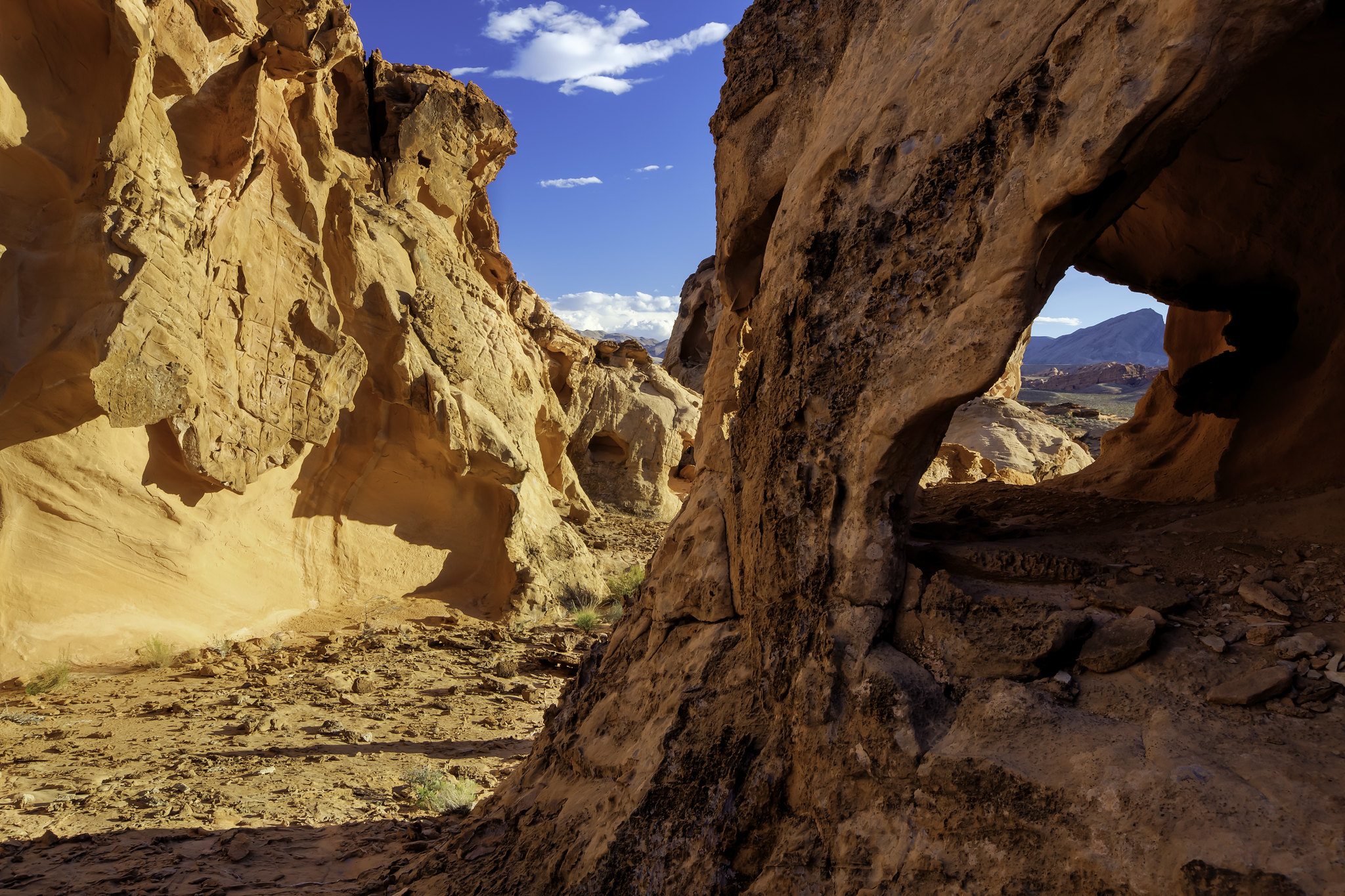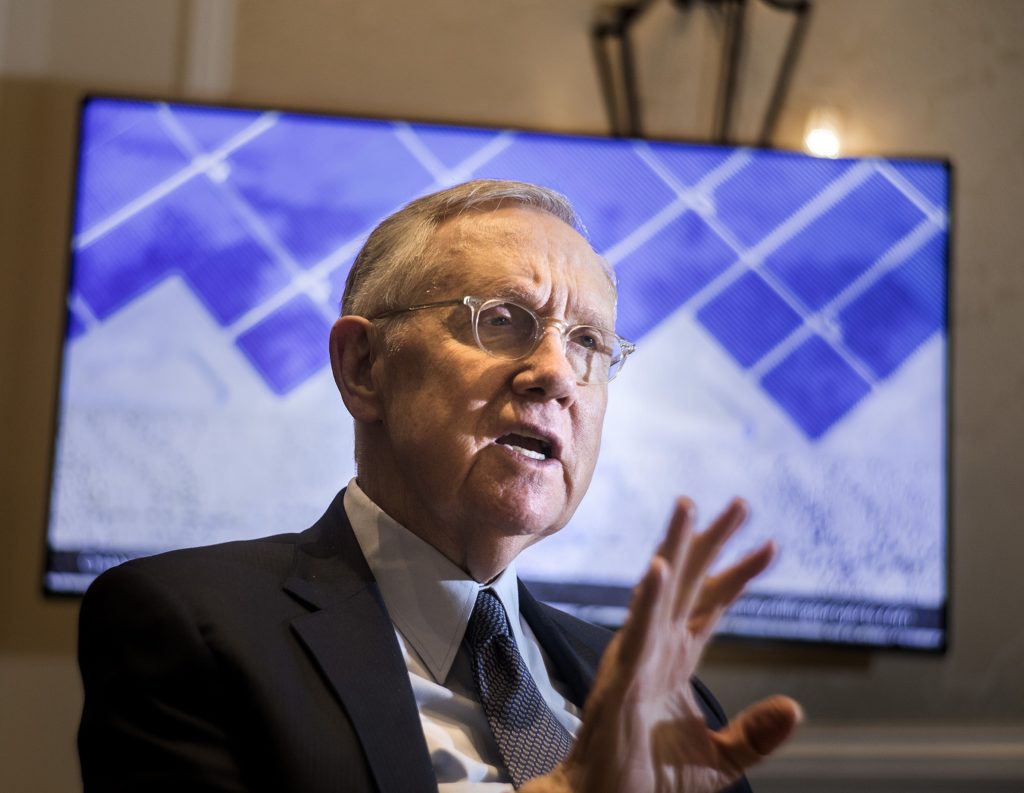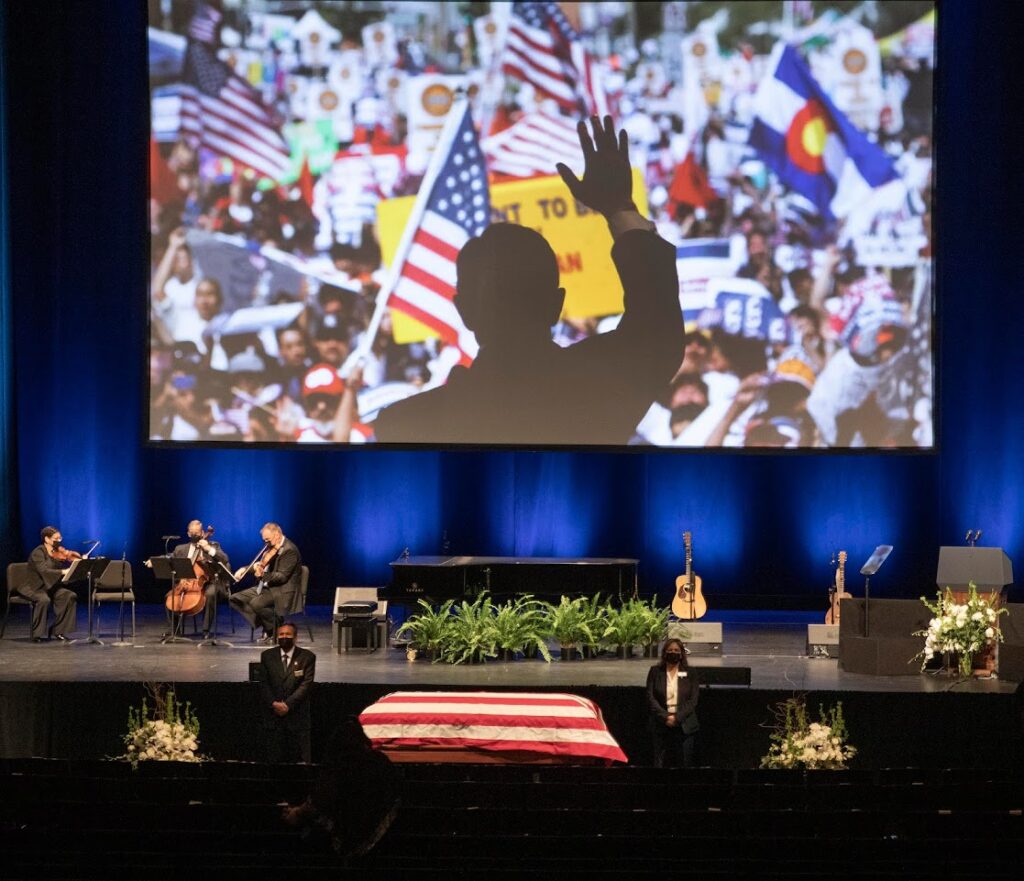The Nevada, and the West, that Sen. Harry Reid helped shape

Good morning, and welcome to the Indy Environment newsletter.
As always, we want to hear from readers. Let us know what you’re seeing on the ground and how policies are affecting you. Email me with any tips or suggestions at [email protected]
To get this newsletter in your inbox, subscribe here.
At some point in the 1990s, Sen. Harry Reid (D-NV) called up then-Secretary of Interior Bruce Babbitt. Reid gave him little information at the time, Babbitt recalled in an interview this week, but said, “Bruce, I want you to meet me out in Las Vegas, and we're going to go dedicate a monument.”
“It was a Harry Reid kind of conversation,” he said. “Quick, short and he hangs up the phone.”
They traveled down a bumpy road that came to a plaque placed there to mark a geologic structure similar to what can be seen at the bottom of the Grand Canyon. Reid, in Babbitt’s telling of the story, was taken by this, that Nevada had this fascinating geology.
"Only Harry Reid — only Harry Reid would think 'here's something that’s really interesting,” he said. “It’s just like the bottom of the Grand Canyon. It's out in the middle of nowhere in Nevada."
The story is illuminating because Reid saw something in Nevada — something different — that set him apart from those that had come before. Viewed by outsiders as a wasteland for military drills and atomic testing throughout the Cold War, Reid, in a 2020 interview, described Nevada as “a very sensitive state,” worthy of and in need of protection. Reid saw this firsthand. He often talked about visiting springs growing up in Searchlight, only to find them vandalized years later.
In a 2020 PBS documentary, Reid said archivists told him that more than half of his papers had something to do with the environment: water, public lands, energy, climate change.
Reid was not the first Nevada senator to take on a natural resources portfolio. From the state’s creation, senators have long played a role in directing federal natural resource policy, often with their eye on developing the arid West for industry, with little consideration for its ecological limits.
There was William Stewart, appointed by the Legislature in 1864. In “Beyond the Hundredth Meridian,” Wallace Stegner described him as running in 1886 “on a platform of free silver and irrigation” and later a figure to “delight a caricaturist and depress a patriot.” Stewart, who helped develop the Comstock Lode as a lawyer in Virginia City, helped write the General Mining Law of 1872, legislation that allowed the industry to extract minerals from public land with no royalty.
Then there was Francis Newlands, who, like Stewart, had ties to the Comstock Lode. His most-remembered legislative accomplishment was the U.S. Reclamation Act of 1902, otherwise known as the Newlands Reclamation Act. It established the Bureau of Reclamation, an agency that would help construct and operate major dams and diversions. Those projects helped irrigate and settle major parts of the West, but often left out Indigenous communities and created new environmental harms on the land.
When Reid came to Congress a century later, these legacies continued to loom, though much was changing. The National Environmental Policy Act and the Endangered Species Act had been signed into law, as well as the Wilderness Act, the Clean Air Act and the Clean Water Act.
It was a time when the West was changing, too. Metropolitan areas, including Las Vegas, were growing rapidly. Meanwhile, some policymakers had a vision of a new West — one with reforms that made it less protective of the industries that ruled the land for economic uses like ranching, mining and logging. There was now a push — and an entire legal framework — for protecting environmental values, habitat for species and land for recreation. It was, moreover, clear how many deals of the old West left out Indigenous communities and neglected promises for water.
In an interview this week, Christian Filbrun, a doctoral student studying environmental history at UNR, described Reid as a “transition figure” in the middle of all of this.
Filbrun noted that “there is a long history of natural resource use by Nevada politicians.” Reid, on the other hand, marked a shift. He was "critical and very important in creating an adaptable and resilient Nevada in the way that it approaches land issues," Filbrun said. Reid tilted the balance of natural resource policy, bringing in Indigenous communities that had once been excluded from the negotiating table and environmentalists that had also been sidelined.
“He left a remarkable record on public lands in Nevada,” Babbitt added.

Indeed, Reid’s list of accomplishments is long: Reid helped to reshuffle water along the Truckee River, a significant portion of which had been diverted away from Pyramid Lake for farms in Fallon — part of a legacy project named for Newlands. Reid helped strike a new deal to bring more water to the lake, which is a cultural and spiritual center for the Pyramid Lake Paiute Tribe and home to two imperiled species of fish, including the Lahontan cutthroat trout and cui-ui.
When Reid was elected to Congress in 1982, there were less than 65,000 acres designated as wilderness in the state. By the time he retired in 2016, Reid had helped designate more than 3.4 million acres of wilderness. Reid also persuaded President Barack Obama to designate Basin and Range National Monument in 2015 and Gold Butte National Monument in 2016.
“He knew how to get stuff done,” said Shaaron Netherton, the executive director of Friends of Nevada Wilderness, which worked with Reid’s office to designate wilderness across the state.
To the ire of western Nevada farmers and ranchers, Reid helped create the program that aimed to restore Walker Lake near Hawthorne through the purchase of water. Reid aided the Clinton administration in its range reforms. Reid used his power in the Senate to block a nuclear waste repository at Yucca Mountain. He pushed back against coal (“there is no clean coal,” he said in joining activists to call for the early closure of the Reid-Gardner Generating Station). Reid also brought more attention to Lake Tahoe, and he talked up renewables long before others did (he was a driving force keeping production tax credits that made many solar projects pencil out).
“We often end up working on political questions and political problems in very short tranches of time,” said Neil Kornze, a former senior advisor to Reid who later directed the U.S. Bureau of Land Management under the Obama administration. “That was not how Harry Reid thought about these things. He had an outsized impact and the work that he did will continue to shape the West for generations. He was thinking about these things on an entirely different scale.”
Reid also helped rural areas deal with the largest landowner in Nevada: the federal government. For every sign that said “Will Rogers Never Met Harry Reid,” there were likely at least a couple rural local government officials who were grateful for Reid’s presence and thousands of people in rural Nevada who were unknowingly shaped by it. The federal role in how Nevada’s lands are managed cannot be overemphasized. It is massive, and Reid understood this to his advantage.
In all of these deals, Reid’s personality certainly played a role. Staffers said he listened and left open space for negotiating. Reid was open to change and minor adjustments once he could get a sense of everyone’s bottom line. But by many accounts his staff played a key role in laying the groundwork for a deal.
“One thing the senator did well was hire good staff and insisted they would visit Nevada often and routinely — and not just get to know the issues but the people,” said Robert Abbey, who served as Nevada state director for the Bureau of Land Management and later as the director.
At the same time, as our CEO (and Reid’s biographer) Jon Ralston wrote in a column, Reid was anything but the two-dimensional figure described by supporters and opponents. His career and policies were textured and complicated. Reid changed and adapted. He understood the limits.
Reid’s record was not without contradictions, and he did not always please environmentalists.
The son of a miner, Reid broke with his party by opposing efforts to reform the General Mining Law of 1872, the legacy of a Nevada senator from the old West. If reform was to happen, it was going to have to happen on his — and Nevada’s — terms. For this, Reid was championed by the industry, much to the chagrin of environmental groups working to change the old law.
“He was really committed to the mining industry in Nevada,” Babbitt said in our interview. “He wasn't going to let a lot of [mining] regulations go by unchallenged. We never got very far with mining law reform, and he wasn't a big advocate of that — but nobody in the West was either.”
Early in his congressional career, Reid helped establish the Great Basin National Park. He then later supported the Las Vegas pipeline, which would have removed water from the aquifers that surrounded the area and was protested by the park itself — not to mention the local community.
With the rest of the delegation, Reid helped engineer public land deals that generated revenue for Nevada based on the sale of federal public land, a remarkable feat given that the land was owned by the federal government. But the bill most often discussed, the Southern Nevada Public Land Management Act, or SNPLMA, also facilitated Las Vegas’ growth in a manner that some environmental groups have said has only worsened the effects of climate change and warming.
Patrick Donnelly, Nevada state director for the Center for Biological Diversity, said we are finding out the hard way about legislation that enabled growth on what was once federal public land.
“It's not just the fossil fuels we put in our cars,” he said. “It’s the way we grow and develop.”
As with other issues, Reid’s legacy on the environment is not only in the policies he shaped. It’s also in the political fabric — the political infrastructure — of the state and the Democratic Party. He left a template behind that is still being used today. Like Reid, Sen. Catherine Cortez Masto (D-NV) has opposed efforts to reform Stewart’s mining law, despite some pushback from her own party.
Cortez Masto also supported a public land bill that would grow Clark County’s urban footprint but add new layers of conservation protections to more than two million acres of land. Other counties across the state are eyeing similar land bills. And some environmentalists, including Donnelly, remain skeptical of whether this model of legislation makes sense in today’s world, where researchers have documented the impact of sprawl on transportation and urban heat.
"I'm way more interested in what is happening tomorrow and the next day,” he said. “How are we going to learn from the past 30 years of experience in Nevada to do better going forward?”
Reid did compromise, and he was not shy about saying so. In that 2020 interview with The Nevada Independent, he said compromise is “a good word. It’s what legislation is all about.” But several people noted that Reid was often playing the long game. There was a saying, Kornze said, that went around: “I'll take a half loaf today. I'll come back for another half loaf tomorrow.”
Reid did circle back to items throughout his career, seizing the advantage of serving continuously in Congress and rising in seniority, and fixed compromises that were not perfect. Reid originally sought the creation of a larger Great Basin National Park rather than the 77,000-acre park that was established. Decades later, Reid effectively expanded the boundaries of the conservation area by 100,000 acres through additional protections for surrounding public land, Kornze noted.
“When you have a career that spans a lifetime,” he said, “you can do that.”
It’s been mentioned that Reid knew how to take a punch, and he knew when not to compromise. Despite his support for mining and negotiating public lands bills, a lot of what he did made him an unpopular figure in rural Nevada. He took heat for his wilderness bills and the water deals.
On some issues, he did not budge. Going through decades of news clips for my own reporting on the Anaconda Copper Mine over the last few years, it was striking to find that one of the few politicians from Nevada to speak out about the pollution — and its impacts on the ancestral homelands of the Yerington Paiute Tribe — was Reid. And not only did he speak out, he spoke in harsh terms. In 2016, he called the site “an abandoned cesspool full of toxic substances.”
Reid knew when to push outside of legislation, often to create the conditions needed for later action, as was the case with renewables and climate policy. In 2012, Reid, joining activists, called on NV Energy for the early closure of the Reid Gardner Generating Station near Moapa, saying “the soot — and the dangerous chemicals inside it — is literally killing the Paiutes.”
He then worked behind the scenes to get the Legislature to make it happen the following year in a bill that Gov. Brian Sandoval signed into law. Reid infamously said he called financial firms and pressured them to drop plans to build coal plants near Ely. By the time Obama released the Clean Power Plan, his 2016 rule to move from coal, Nevada was already on track to meet it.
At the same time, Reid continued to push for more solar, tussling with the utility in the process. In 2016, Reid chided a task force on rooftop solar and later came out in support of the ballot initiative to break up the utility, saying that “Nevadans should have the freedom to decide who supplies their electricity and whether to generate it with their own renewable energy system.”
“There's always a tendency, appropriately, to remember the compromise side,” Babbitt said in describing Reid’s political approach. “But when he came down on an issue that he really cared about — and kind of knew in advance that there wasn't much space to work across — he could dig his heels in and be very effective with people, including persuading people to compromise.”

Here’s what else I’m watching this week:
Nevada is off track in meeting its net-zero goals: “That shortfall was highlighted in the 2021 version of the Nevada Division of Environmental Protection’s greenhouse gas emissions report,” my colleague Riley Snyder reported on Tuesday. “The report does not take into account more recent state actions — including a recent major transmission and electric vehicle charging infrastructure bill or adoption of “clean car” standards — and is likely affected by the national trend of emissions rising 6.2 percent in 2021 as COVID-19 restrictions eased and economic activity picked up after 2020, when emissions fell by a record 10 percent over the prior year.”
Lee, Titus join call for Avi Kwa Ame national monument, Jazmin Orozco Rodriguez reports.
The complicated issues around water efficiency: KUNC’s Alex Hager wrote an excellent story about why irrigation efficiency can be more complicated than simply switching from flood to drip irrigation. This, of course, has implications for the Colorado River negotiations and in parts of rural Nevada, where water users are looking at ways to better manage limited water supplies.
Emergency measures at Lake Powell: “As Lake Powell’s water level continues to decline, federal water managers will implement another round of emergency measures to keep the Utah largest’s reservoir from reaching a point where Glen Canyon Dam can no longer generate electricity,” The Salt Lake Tribune’s Brian Maffly reported last week.
“Nevada is not America’s dumping ground:” A shipment of mixed radioactive waste was delivered to facilities in Nevada and New Mexico, the federal government acknowledged in a statement to Associated Press reporter Ken Ritter. Democratic Rep. Dina Titus sent a letter to Energy Secretary Jennifer Granholm Monday over the 13,625 cubic meters of material, enough to fill several Olympic-sized pools. Titus wrote that “Nevada is not America’s dumping ground.”
A fascinating story on James Edward Church, a UNR professor who helped develop methods that are still used to measure the snowpack, from the Reno Gazette Journal’s Amy Alonzo.
A look at the snow: The Jan. 1, 2022 water outlook is out for Nevada. So far, so good.
Nevada Gold Mines is looking to build a rail line that would cut across northeastern Nevada, Jael Holzman from E&E News reported last week. The railroad could cost at least $600 million.
“We were born ranchers, we like to cowboy, then we turned into wanting to learn about the soils and then wanting to improve the health of our family.” This is a good in-depth profile from my colleague Jazmin Orozco Rodriguez on the Secret Pass Ranch near Elko.
